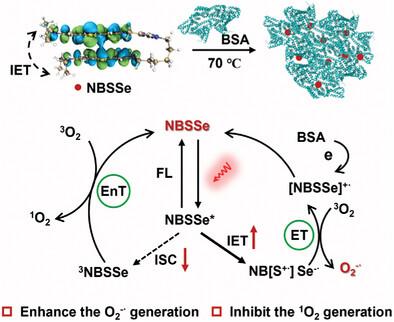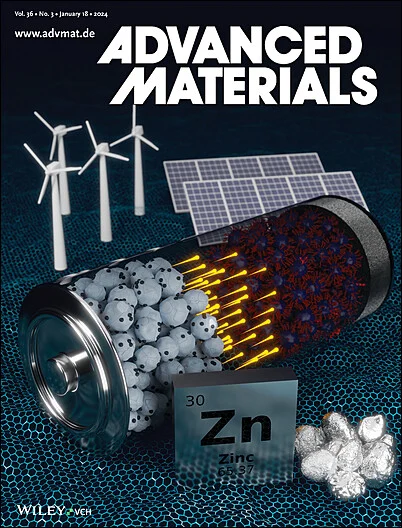Heterodimeric Photosensitizer as Radical Generators to Promoting Type I Photodynamic Conversion for Hypoxic Tumor Therapy
IF 27.4
1区 材料科学
Q1 CHEMISTRY, MULTIDISCIPLINARY
引用次数: 0
Abstract
Photodynamic therapy (PDT) using traditional type II photosensitizers (PSs) has been limited in hypoxic tumors due to excessive oxygen consumption. The conversion from type II into a less oxygen-dependent type I PDT pathway has shown the potential to combat hypoxic tumors. Herein, the design of a heterodimeric PS, NBSSe, by conjugating a widely used type I PS NBS and a type II PS NBSe via molecular dimerization, achieving the aggregation-regulated efficient type I photodynamic conversion for the first time is reported. Electrochemistry characterizations and theoretical calculations elucidate that NBSSe tends to form a S+·/Se−· radical pair via intramolecular electron transfer in the co-excited NBSSe* aggregate, realizing 7.25-fold O2−· generation compared to NBS and 80% suppression of 1O2 generation compared to NBSe. The enhanced O2−· generation of NBSSe enables excellent anti-hypoxia PDT efficiency and inhibition of pulmonary metastasis. Additionally, the incorporation of electron-rich bovine serum albumin accelerates the recycling of cationic PS radical NBSSe+·, further boosting photostability and O2−· generation. The resultant BSA@NBSSe nanoparticles demonstrate successful tumor-targeting PDT capability. This work provides an appealing avenue to convert ROS generation from the type II pathway to the type I pathway for efficient cancer phototherapy in hypoxia.

求助全文
约1分钟内获得全文
求助全文
来源期刊

Advanced Materials
工程技术-材料科学:综合
CiteScore
43.00
自引率
4.10%
发文量
2182
审稿时长
2 months
期刊介绍:
Advanced Materials, one of the world's most prestigious journals and the foundation of the Advanced portfolio, is the home of choice for best-in-class materials science for more than 30 years. Following this fast-growing and interdisciplinary field, we are considering and publishing the most important discoveries on any and all materials from materials scientists, chemists, physicists, engineers as well as health and life scientists and bringing you the latest results and trends in modern materials-related research every week.
 求助内容:
求助内容: 应助结果提醒方式:
应助结果提醒方式:


